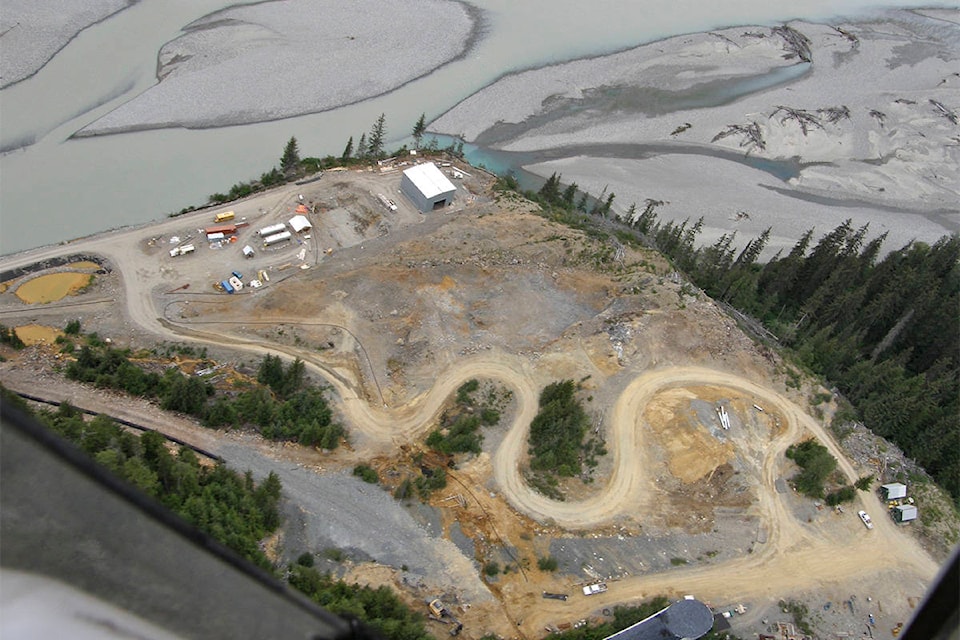An Ontario court has picked an end date for the receivership process for Chieftain Metals, the beleaguered former owner of the Tulsequah Chief Mine site 100 kilometres south of Atlin, B.C.
The company owned the mine before going bankrupt and entering receivership in 2016. The mine has continued to leak acidic drainage into the Tulsequah River and Taku River, raising concern by both Canadian and American environmental groups.
The abandoned site is within the traditional territory of the Taku River Tlingit First Nation.
The First Nation had advocated for the receivership process to end, making it clear they did not want the project to restart.
“In the past, we were open to a project that does not involve the construction of a major access road, has a longer mine life and would result in a guaranteed cleanup of the ongoing acid mine drainage. However, we now have little confidence that the mine is economically viable or that these conditions are achievable,” said John Ward, acting as spokesperson for the Taku River Tlingit First Nation, in an affidavit signed July 30.
“The full extent of the environmental effects of the acid mine drainage on the surrounding soils and waters is still being studied by the Taku River Tlingit and others,” said Ward.
The mine originally operated from 1950 to 1957, producing silver, gold, lead, copper, zinc and cadmium when owned by Cominco, which later rebranded as Teck Resources. Over time two other companies have attempted to restart the project.
Redfern Resources took over the mine in 1992, with the intention to propose and build a 160-km access road from Atlin to the mine site. In 2008 the company went bankrupt.
In 2009 it was placed in receivership, opening the door to another purchaser. The next year Chieftain Metals Ltd. purchased the mine.
The company operated an interim water treatment facility for nine months in 2012 prior to going bankrupt. The mine again entered receivership in 2016.
On Oct. 8 Ontario Superior Court Chief Justice Morawetz made the decision to not extend the timeline of looking for a purchaser beyond two years. In the decision, Morawetz notes that “the Province and the TRTFN are entitled to certainty of outcome.”
The court did grant West Face Capital the right to apply to re-start receivership within the next two years if a new buyer for the mine comes forward. After that point, the company will need to end its claim on the site.
Both the Taku River Tlingit and environmental groups were concerned that if the business stood a good chance of eventually being purchased by another company, the government of British Columbia might be reluctant to invest money in the clean-up if it would benefit a future owner who planned to reopen the mine.
“This ruling is significant because the receivership was constraining B.C.’s efforts to take responsibility for this abandoned and polluting mine and clean it up and close it down,” said Chris Zimmer, Alaska campaign director with Rivers Without Borders, a non-profit that has been pursuing the issue.
“West Face made an ill-advised investment, and despite four years of receivership, the firm is continuing a desperate attempt to sell a mine that nobody wants,” he said.
Work on the remediation of the site began in summer 2020, with the B.C. government announcing an initial spend of up to $1.575 million for site preparation and studies.
Contact Haley Ritchie at haley.ritchie@yukon-news.com
